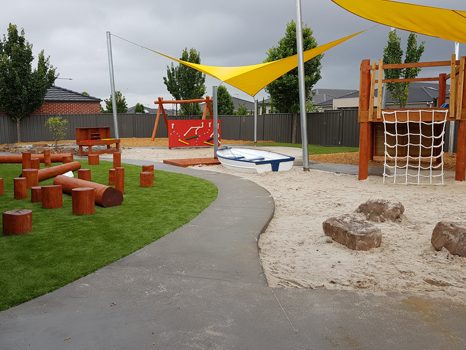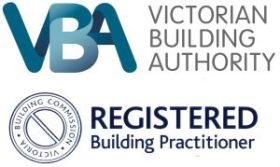Your outdoor play space should encourage kids to learn and grow through exploration, free play, and working with others. The following how-to guide will help you if you are starting a new project, fixing up a certain play area, or making over your whole outdoor space at childcare.
A valuable and enriching part of outdoor play is giving kids chances to do things that are hard, exciting, or a little “risky.” Children can learn how to get around in their environment and how to evaluate risks and think about what might happen.
When making a play space, it’s important to include different kinds of play areas so that all children, no matter their age, ability, needs, or interests, can find something they like. These might have the following design elements:
Active Space:
Includes both fixed and moveable equipment, like slides, structures for climbing, like rock walls or scramble netts, and items for balancing, like natural boulders.
Having different heights and ways to get on and off gives kids more options and challenges. It also helps them build core and upper body strength, balance, and both large and small muscle development.
Open Space:
Allows kids to run, jump, roll, play with balls, and play organised games.
Quiet Space:
Not all kids like to play. Giving kids a quiet space, like a cubby or fort, helps them relax, be alone, and take a break. It’s important to have a place to read a book alone or with a friend.
Social Space:
Children are naturally social, and areas like a platform or stage can be changed by adding loose parts or props. This helps their imaginations and gives them more chances to interact with others. Our gazebos, pergolas, and thatched roofs make great platforms or stages.
Creative Space:
It’s important to give people unstructured chances to be creative. Children are more likely to create, design, and build with a variety of materials, tools, and loose parts.
They use their imaginations and mental skills to come up with ideas and build things that they can control. This kind of learning makes people more independent and gives them a sense of success.
Exploration Space:
Sand pits, digging patches, sensory gardens, frog ponds, magnifying glasses, and binoculars all get kids interested and encourage them to look around. If we can make a child curious, we can encourage their natural desire to learn for the rest of their lives.
Nature Space:
In our busy, over-scheduled world, it’s important to spend time with nature. Everyone’s mental and physical health can improve when they spend time in nature.
We want to teach our kids how to take care of the world around them. Children learn the value of their environment and want to protect it when they learn about bushes, bees, and bugs in a natural bush setting or a man-made environment that looks like nature.
Inspections and maintenance go further than the design.
Once you’ve made your fun new play area, you’ll need a thorough post-installation playground inspection before you can use it. We can do that for you. This makes sure that the Australian Standards are being followed and checks for general safety and operation problems. By inspecting and taking care of a play space in the right way, teachers can keep children safe and keep the space in good shape.
Since we focus on building play areas for the Early Education sector, we know the NQF framework and the Australian Standard requirements for playgrounds and surfacing. We can work with you to make sure your new outdoor space meets all of these requirements.
For more information around play area design, sports field, school projects,please don’t hesitate to call us on 1300 027 475 to discuss your commercial landscaping project.


